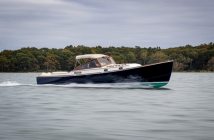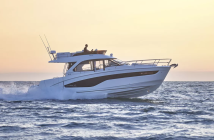Can you read all the bottom symbols on the chart above? Do you know the difference between “M” (mud) and “Ms” (mussels)? Such knowledge could save you from running hard aground; it certainly could help in choosing your next anchorage.
If you give them a good look, nav charts can tell you the type of material on the bottom, and help you decide your course (and what to avoid) as well as guiding you to the best anchorage for your boat. The symbols on the chart also will tell you which type of anchor to use.
You probably know much of this already, but here’s an easy refresher from Skipper Tips to help you make smart decisions about the sea bottom and anchoring. It’s based on five factors:
- How to choose the best bottom for anchoring. You’ll want to look for sand, hard mud or clay for a secure set.
- How to select the right type of anchor. Lightweight anchors, such as a Danforth, hold well in most sand, mud or clay bottoms. If you have doubts, if the sea bottom is too hard or too soft, use a larger plow or claw anchor – the CQR, Delta or Bruce. Follow this rule: “When in doubt, get the plow or claw out.”
- How to anchor in poor bottoms. If you have to anchor in grass or any hard bottom, take extra care. Use the heaviest anchor you have on board with a trip line. Put out a second anchor if there isn’t much swing room or you’re in heavy weather.
Read more:
https://www.skippertips.com/public/Know_Your_Seabed_Symbols_for_Safer_Sailing_Navigation.cfm




